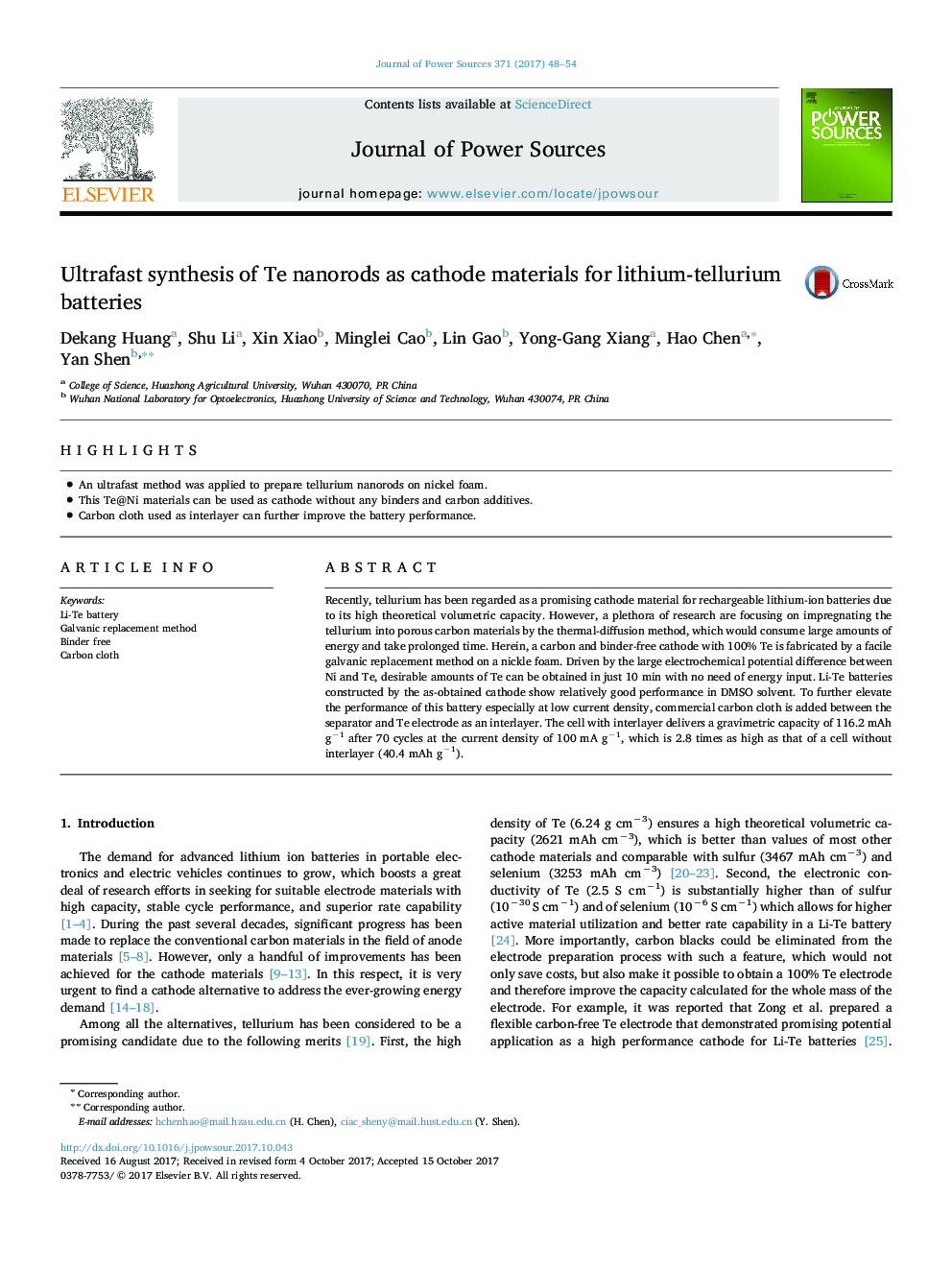| Article ID | Journal | Published Year | Pages | File Type |
|---|---|---|---|---|
| 7726495 | Journal of Power Sources | 2017 | 7 Pages |
Abstract
Recently, tellurium has been regarded as a promising cathode material for rechargeable lithium-ion batteries due to its high theoretical volumetric capacity. However, a plethora of research are focusing on impregnating the tellurium into porous carbon materials by the thermal-diffusion method, which would consume large amounts of energy and take prolonged time. Herein, a carbon and binder-free cathode with 100% Te is fabricated by a facile galvanic replacement method on a nickle foam. Driven by the large electrochemical potential difference between Ni and Te, desirable amounts of Te can be obtained in just 10Â min with no need of energy input. Li-Te batteries constructed by the as-obtained cathode show relatively good performance in DMSO solvent. To further elevate the performance of this battery especially at low current density, commercial carbon cloth is added between the separator and Te electrode as an interlayer. The cell with interlayer delivers a gravimetric capacity of 116.2Â mAh gâ1 after 70 cycles at the current density of 100Â mAÂ gâ1, which is 2.8 times as high as that of a cell without interlayer (40.4Â mAh gâ1).
Keywords
Related Topics
Physical Sciences and Engineering
Chemistry
Electrochemistry
Authors
Dekang Huang, Shu Li, Xin Xiao, Minglei Cao, Lin Gao, Yong-Gang Xiang, Hao Chen, Yan Shen,
